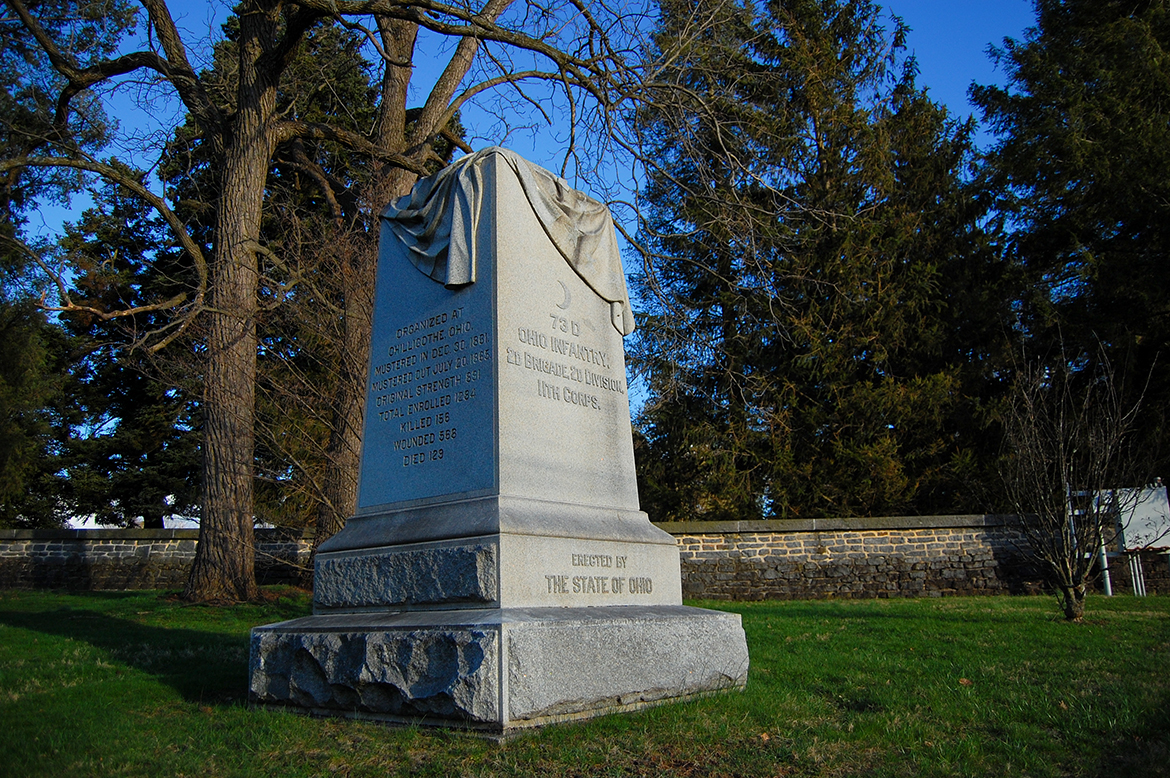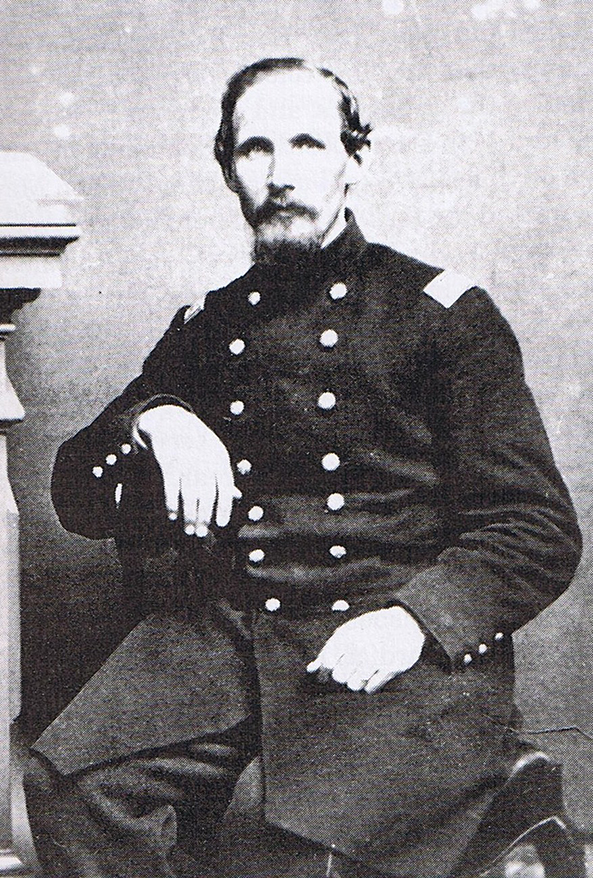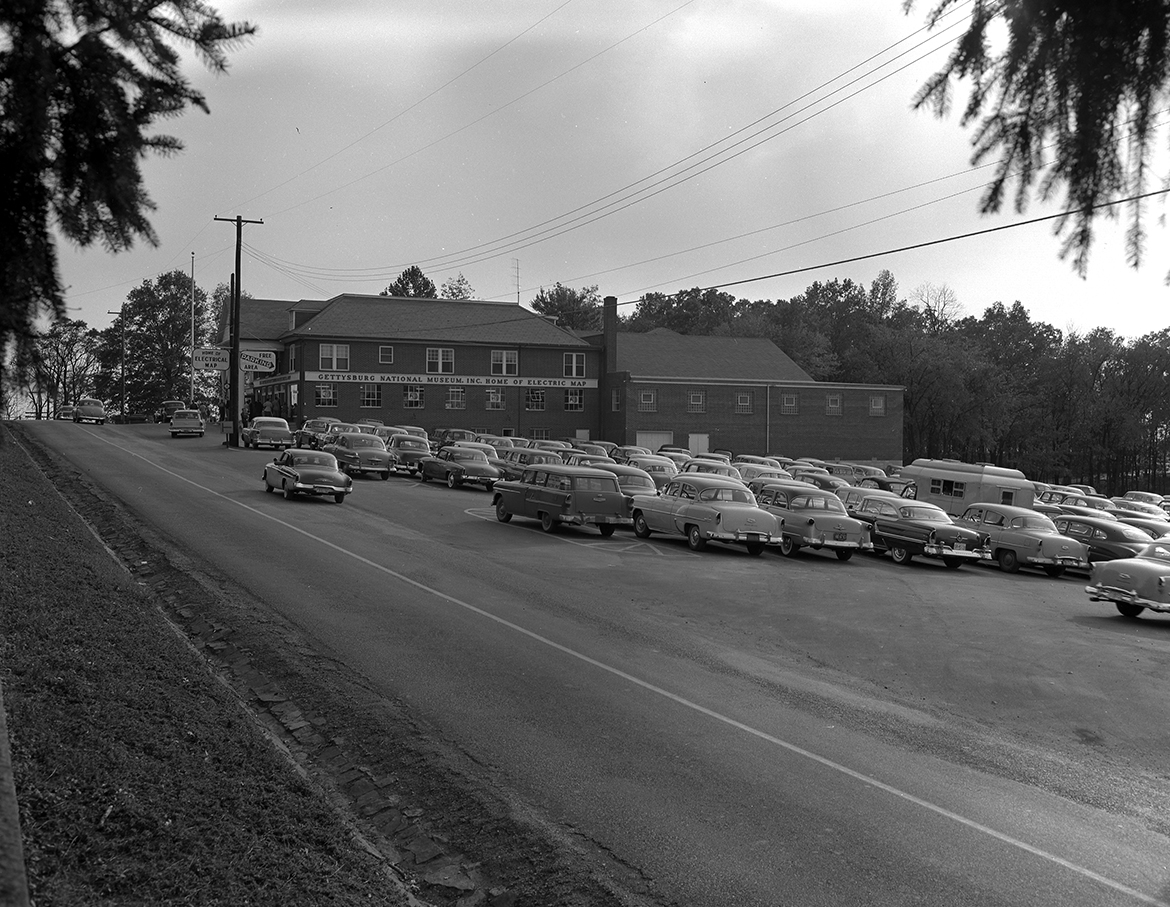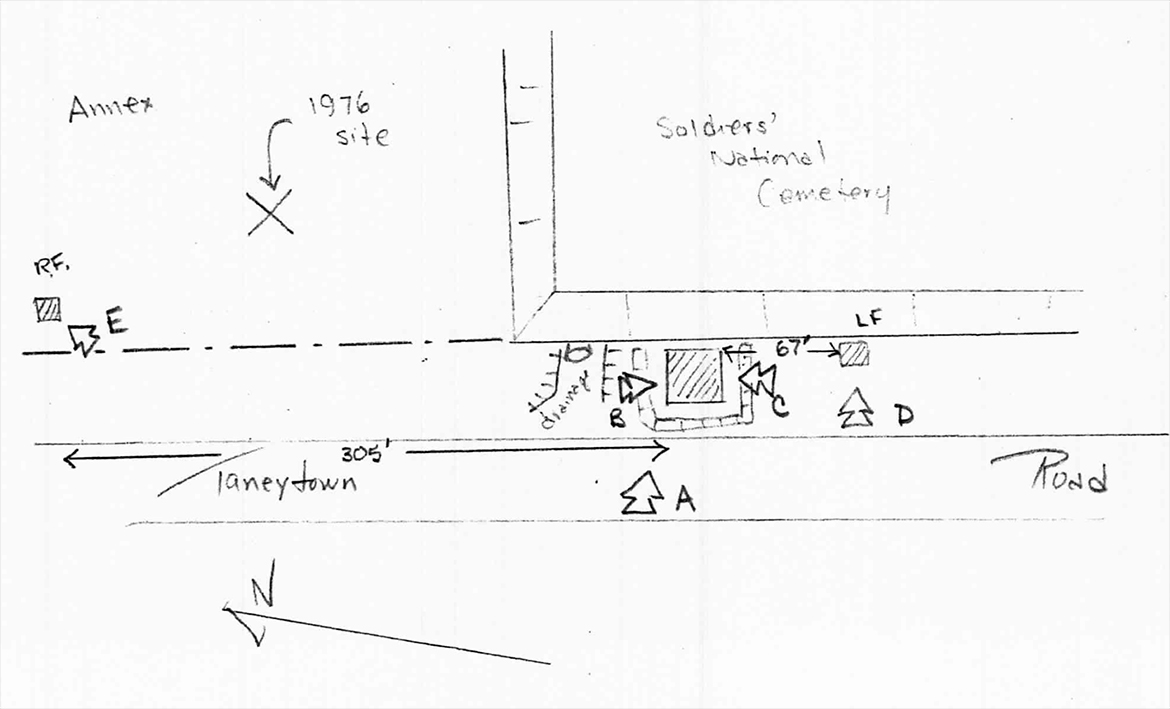The monument to the 73rd Ohio Infantry Regiment is located in the National Cemetery Annex.This view was taken facing south at approximately 6:30 PM on Wednesday, April 5, 2017.
It was dedicated on “Ohio Day,” September 14, 1887. But this monument wasn’t dedicated in this location. It was dedicated 90 feet to the south on the Taneytown Road.This view was taken facing northeast at approximately 6:30 PM on Wednesday, April 5, 2017.
Colonel Orland Smith, commander of the Second Brigade, Second Division, 11th Corps. Thirty-six-year-old Orland Smith of Chillicothe, a railroad executive who had been active in the local militia, was appointed as colonel, a role he would excel in; many years later, one of his men noted of Smith, “His record as a brave, wise, and far-sighted commander was unsurpassed. His memory will always be cherished by those he led so wisely and cared for with such sympathy and kindness.”This image and description is courtesy of LBG Stuart Dempsey.
Liuetenant Colonel Richard Long, Commanding Officer of the 73rd Ohio. From the early morning of July 2, through the morning of July 4, 1863 the 73rd and their comrades of Smith’s Brigade were engaged on the skirmish line during every daylight hour, contesting a key ridge located about 350 yards west of Cemetery Hill. While only two to three companies of the regiment were on the line much of the time, their casualties were heavy: Company G lost twenty-three of thirty-six men in one bloody hour on July 2. By the time the battle ended, the 73rd Ohio had sustained 145 casualties, over forty percent of their strength.This image and description is courtesy of LBG Stuart Dempsey.
Notice the monument’s original placement upon a stone foundation. When the veterans of the 73rd Ohio placed their monument in 1887 there were a few things they didn’t anticipate.This view was taken facing southeast by William Tipton circa 1897.
They placed their monument at a time when many people toured the battlefield from carriages…We think that’s the 73rd Ohio along the right-hand side of the Taneytown Road, but we’re not sure. This view was taken facing north by William Tipton circa 1905.
…or an electric trolley. The road wasn’t very wide, because it didn’t need to be.This view was taken facing north at by William Tipton circa 1905.
But then automobile traffic came to the Taneytown Road.This view was taken facing south and is courtesy of the Center for Civil War Photography, which has more than 1,000 historic Gettysburg Park images like these on their Flickr.
A map showing the original and new location of the 73rd Ohio Infantry monument.This map was created in a chair facing east on April 1, 2017.
In order to protect the monument, a mound of earth was built up and stone curbing was placed at its base along the road. There was no shoulder for cars driving on the Taneytown Road.The chain-link fence in the left background marks the location of the National Cemetery Annex. This view was taken facing east and is courtesy of the Center for Civil War Photography, which has more than 1,000 historic Gettysburg Park images like these on their Flickr. You can also visit their store..
This didn’t stop cars from having accidents at the memorial. A high school student, whose lit cigarette sparked onto his cap and gown in the backseat, drove his car off the road and into the gutter, coming to a halt “with its bumper a few inches from the 73rd Ohio monument.”This screen capture was taken from Page Fourteen of the May 31, 1962 issue of The Gettysburg Times.
The drainage gutter today.A 1930s survey marker is visible in the ground in the left of frame along the fence at the cemetery annex. This view was taken facing west at approximately 1:00 PM on Wednesday, March 29, 2017.
The monument can be seen in its location along the Taneytown Road in this photograph of a burial in the Soldiers National Cemetery. Onlookers behind the wall in the right of frame are standing in what is today the National Cemetery Annex. The five acres of land for the annex was not transferred to the National Park Service until 1960. The first burial in the Annex occurred in 1968. The soldier being buried here is likely a World War I veteran.This view was taken facing northwest circa 1937-1943 and is courtesy of the Center for Civil War Photography, which has more than 1,000 historic Gettysburg Park images like these on their Flickr. You can also visit their store..
By 1974 there was enough talk about the traffic accidents caused by the monument’s location that the Gettysburg National Military Park Superintendent mentioned that the monument would be relocated.This screen capture was taken from Page Three of the October 23, 1974 issue of The Gettysburg Times.
A month before the bicentennial celebrations of 1976, the National Park Service moved the monument into the Annex. This map shows the monument before the move, surrounded by the stone curbing and next to the drainage gutter.This map was made in 1976 [NPS].
The monument to the 73rd Ohio Infantry was located in the center of this photograph. The stone curbing and earth built up around the monument were removed.The Soldiers National Monument in the National Cemetery can be seen in the right background. This view was taken facing east at approximately 6:30 PM on Wednesday, April 5, 2017.
We’re taking this photograph from the old location of the 73rd Ohio. We’re looking south towards the monument’s left flank marker.This view was taken facing south at approximately 6:30 PM on Wednesday, April 5, 2017.
An aerial view that shows the National Cemetery Annex as it appeared before its acquisition and establishment by the Park Service. The 73rd Ohio Infantry monument would ultimately be moved into the annex.This view was taken circa the 1950s and is courtesy of the Center for Civil War Photography, which has more than 1,000 historic Gettysburg Park images like these on their Flickr. You can also visit their store.
A highlight of the previous image showing where the 73rd Ohio would be relocated.This view is courtesy of the Center for Civil War Photography, which has more than 1,000 historic Gettysburg Park images like these on their Flickr. You can also visit their store.
This aerial photo shows the 73rd Ohio at its new location in the National Cemetery Annex. Burials in the National Cemetery were put on hold in 1978 when the annex was deemed at capacity.This aerial view was taken facing south circa 1976-1982.
Though requests for internment officially closed in 1978, burials still happen in the National Cemetery and Annex. A widow of a Vietnam War veteran was buried here in November of 2016. Her husband was buried in the annex in 1972. The 73rd Ohio Infantry monument is in the background.This view was taken facing southwest at approximately 6:30 PM on Wednesday, April 5, 2017.




















